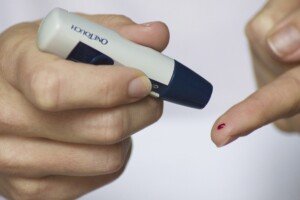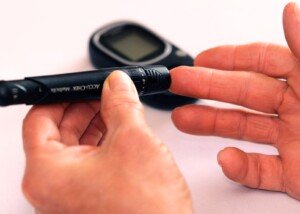
Is a fasting blood sugar that’s always in the 90 range as good as always in the 80’s or 70’s, or does this mean you’re at higher risk for eventually developing type 2 diabetes?
There’s an assortment of glucose test kits that you can purchase at drug stores and online.
They are accurate and easy to use. Simply test your fasting glucose first thing in the morning before eating any amount of food or beverage (other than water).
• A normal fasting blood sugar is under 100 (mg/dL).
• Prediabetes is 100 to 125.
• Diabetes is 126 or more.
• Don’t panic if one morning your fasting glucose is 105. It could be from getting only four hours of sleep, even if you were in bed for seven hours.
But what if your fasting blood sugar is typically in the 90’s?
Should you be worried?
Yes, you most certainly should be quite concerned if 90-something keeps popping up on the results screen.
“The road to diabetes is a continuum,” says Stacy Mitchell Doyle, MD, resident physician of FoodTherapyMD and long-time advocate of plant-based nutritional protocols.

Dr. Doyle explains, “The closer it is to 100, the more you are moving towards prediabetes.
“It’s important to check your sugar regularly over time, and if it is consistently in the 90’s and creeping up, although not officially prediabetic, it may be moving that way if there are no dietary changes.”
Knock back on the pastries, candy, white bread and sugary soda and see what happens.
Fill the void, that’s created by eliminating these unhealthy foods, with whole fruit, fruit smoothies, green salads, steamed vegetables, a boiled Russet potato or a big handful of whole nuts such as almonds.

Replace fast-food burgers with tuna salad sandwiches on whole grain bread.
Replace French fries with brown or basmati rice. Replace soda with water, pomegranate juice or homemade lemonade sweetened with Stevia.
Check your fasting blood sugar after several days of sticking to these dietary changes.
You’ll be delighted at what you’ll see! Just make sure you’re getting fruitful sleep, since sleep disruptions can yield a fasting glucose in the low 100’s.
Another way to get your fasting glucose persistently under 90 is to take up strength training.
Adding lean muscle to your body means increasing its number of insulin receptor sites, making it easier for sugar to leave your blood and enter your muscle cells.



























